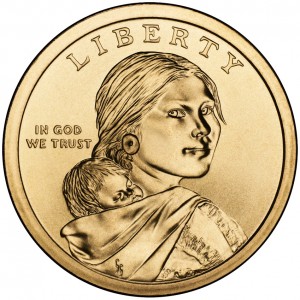The 2013 Native American $1 Coins will mark the fifth year in a series of strikes from the US Mint honoring the contributions of Native Americans to the United States of America.
Congress authorized this series with the Native American $1 Coin Act signed into law by President George W. Bush on September 20, 2007 to become Public Law 110-82. The specific language of the Act required the reverse designs to contain "images celebrating the important contributions made by Indian tribes and individual Native Americans to the development of the United States and the history of the United States."
To that end, the Mint started the new series in 2009 with the release of the 2009 "Three Sisters" Native American Coin. It showcased a woman planting seeds of corn, beans and squash together in a method developed by the Native Americans around 1000 A.D.
Following that release in 2010 was a design honoring the Haudenosaunee Confederation, also known as the Iroquois Confederacy. This 2010 Native American $1 Coin honored the diplomatic and political alliance formed by five tribes in the early 1400’s.
Then, in 2011, the reverse design was emblematic of the peace treaties between tribes and European settlers as they arrived in the New World. Specifically, the 2011 strike showed the hands of Supreme Sachem Ousamequin Massasoit and Governor John Carver exchanging the peace pipe in 1621.
The obverse of all strikes in the series contains the same portrait of Sacagawea featured on a dollar coin by the Mint since 2000. Sacagawea was a young Shoshone woman who served as a guide to the Lewis and Clark Expedition in the early 1800’s.
Shown on the reverse of the 2013 Native American $1 Coin will be a design continuing the series emblematic of the contributions made by Native Americans to the history of the United States.

